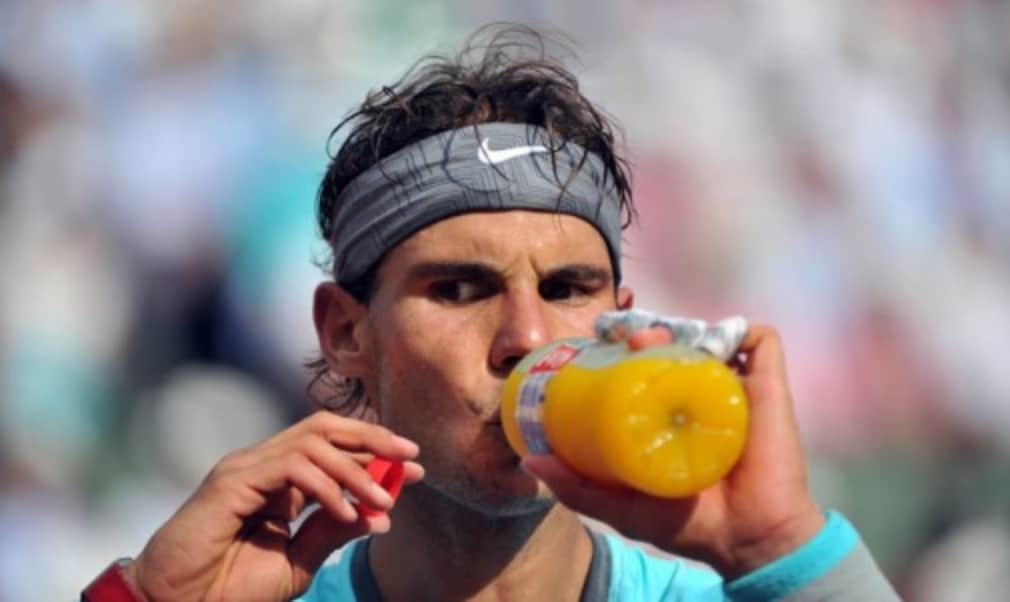
Food for refuelling
Originally published on 03/12/14
It’s always tempting after a tough match or training session to switch off for a while. But as the top players know, preparation for the next match starts the moment you step off court.
Between one and four hours of exhaustive exercise leaves the body depleted of energy reserves and if you want to perform at your best, the process of restoring the body starts immediately.
When provided with the correct fuel, the body is extremely efficient at storing energy. We have glycogen stores in the liver and skeletal muscles; liver glycogen stores are mainly used to fuel the brain – to keep cognitive processes firing, while muscle glycogen provides the fuel the body needs to keep moving.
Maintaining these glycogen stores is key to supporting the recovery process and the vital ingredient is carbohydrate. Evidence shows that exercised muscles are more receptive to delivery and absorption of nutrients, so the timing of glycogen replenishment is key. During the two-hour window after exercise muscles are more sensitive to insulin, meaning that sugars from carbohydrate can be absorbed at a faster rate. But if carbohydrate consumption is delayed by two hours, the rate of muscle glycogen synthesis can decrease by as much as 50%.
Full glycogen recovery can take in excess of 20 hours so maintaining an intake of good-quality carbohydrate during this time will be beneficial. The most effective way to refuel is regular snacking and consumption of carbohydrate split into equal quantities.
Different carbohydrates have different effects on insulin and therefore sugar uptake. Fructose, although a simple carbohydrate, is not as effective as glucose or sucrose. This doesn’t mean you can’t snack on a banana post-exercise, but it won’t be enough if you’ve got to recover quickly for another match or training session.
Due to absorption limitations, the first two hours may be best suited to easily absorbable replacements, such as sports drinks. These fluids will also help with rehydration and provide carbohydrate, proteins and electrolytes that are easily absorbed.
Understanding how much carbohydrate you should be eating for glycogen replacement will help you refuel more efficiently. Elite tennis players will eat between 6-10g per kilogram of body weight per day to ensure glycogen stores are always full – women will be at the lower end of the scale, men higher – with small variations to accommodate changes in training schedules.
The professionals understand the consequences of poor post-match recovery. It doesn’t take long for the energy reserves to become so depleted that symptoms of overtraining, such as fatigue and poor immune function, become apparent – once you get to this stage it becomes harder to recover.
Longer term, there may be more serious injury worries. If muscle glycogen is depleted, muscles become weaker and are no longer as effective at absorbing shock. For a tennis player this is a problem from the feet up. If shinbones aren’t fully supported they will start to feel the impact normally absorbed by the muscle. This could lead to stress fractures, and an unwelcome injury lay-off.
So what about protein? Studies show that including protein with the carbohydrate recovery food speeds up glycogen replenishment by increasing the uptake of sugar. For an optimal postexercise snack, look for options such as chocolate milk, a couple of portions of fruit with milk or drinking yoghurt, a handful of nuts and dried fruit, a jacket potato with tuna, or a sandwich with a protein filling such as cheese, tuna, peanut butter or egg. For main meals, high or medium GI foods including rice, pasta or potato with a healthy serving of vegetables and a serving of lean meat or fish is optimal.
And, of course, protein is essential for muscle recovery. Muscle tissue is damaged during exercise, and needs to repair – which is why you feel achy in the days after a heavy workout (Delayed Onset Muscle Soreness). Helping muscle to rebuild after exercise involves delivering good quality protein that can be quickly absorbed and utilised to limit damage and speed recovery.
Inflammation is part of the recovery process for muscle tissue – it happens when the immune system begins to deliver white blood cells (leukocytes) to help remove and rebuild muscle cells and fibres. Part of this process results in the onset of oxidative stress. The repair process involves chemical reactions that produce Reactive Oxidative Species (ROS) – also known as Free Radicals. Left unchecked ROS can cause more damage to tissue, impeding recovery, so the body needs to be equipped with antioxidants to help offset ROS activity.
If you are regularly training at a high intensity, the body adapts and produces its own antioxidants. These players are less likely to experience DOMS, a side effect of ROS activity. However, dietary sources of antioxidants, particularly the vitamins A, C, and E are important to ensure that the body is fully supported in its recovery.
Look to brightly-coloured vegetables including green leafy vegetables, bell peppers, tomatoes, citrus, mango, carrots, sweet potatoes and butternut squash, as well as wheatgerm oil, almonds, walnuts and berries to ensure you’re eating the right mix of antioxidant-rich foods.
This article originally featured in Volume 5 Issue 4. Subscribe to the magazine today or download tennishead on iTunes.


